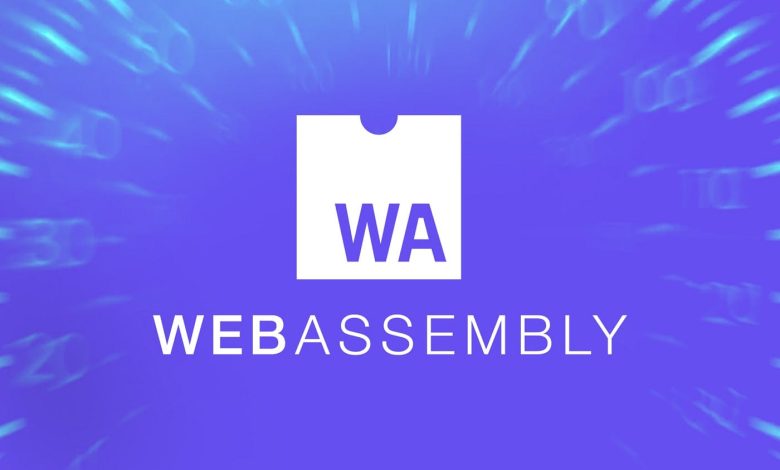Modern Frontend Development Trends: From React to WebAssembly

The landscape of frontend development is evolving faster than ever. What was cutting-edge a few years ago may now feel outdated. With frameworks like React, Vue, and Svelte dominating the scene, and newer technologies like WebAssembly pushing the limits of what can run in the browser, staying up-to-date is essential for developers aiming to build efficient, scalable, and modern web applications.
This article explores the latest frontend development trends in 2025, highlighting the technologies, techniques, and best practices that are shaping the future of web interfaces.
1. Dominance of Component-Based Frameworks
a. React Remains a Powerhouse
React continues to be one of the most widely used frameworks for building dynamic user interfaces. Its component-based architecture promotes reusable code, maintainability, and scalability. The React 18 features, such as Concurrent Mode and Server Components, allow for faster rendering and more responsive applications.
b. Vue.js: Simplicity and Flexibility
Vue.js is favored for its simplicity and gentle learning curve. Its composition API provides flexibility and reusability, making it suitable for small projects and large-scale applications alike. Vue 3’s improvements in reactivity and performance make it competitive with React.
c. Svelte and the Compiler Revolution
Svelte shifts work from the browser to the compile step, producing highly optimized vanilla JavaScript with minimal overhead. Unlike React and Vue, Svelte applications have smaller bundle sizes and faster load times, making them ideal for performance-critical applications.
2. TypeScript Becomes Standard
TypeScript adoption continues to rise in 2025, becoming a standard for modern frontend development. By adding static typing, developers can catch errors at compile time rather than runtime, improving code reliability. Integration with React, Vue, and Svelte allows for safer and more maintainable applications. Additionally, TypeScript improves developer experience with better auto-completion, navigation, and refactoring tools.
3. State Management Evolutions
a. React Context and Redux Toolkit
Managing application state has been a challenge in large applications. React’s Context API combined with Redux Toolkit provides an efficient solution for global state management. Redux Toolkit simplifies Redux usage with less boilerplate, making state management more intuitive.
b. Emerging Solutions: Zustand and Jotai
Lightweight state management libraries like Zustand and Jotai are gaining traction. They offer simple APIs and avoid the complexity of traditional solutions, improving performance and developer productivity.
4. WebAssembly: Unlocking Browser Performance
WebAssembly (Wasm) is a game-changer for frontend development, enabling near-native performance in the browser. Traditionally, computationally intensive tasks like image editing, video processing, or 3D rendering required native applications. WebAssembly allows developers to write code in languages like C, C++, or Rust and run it in the browser efficiently.
Use cases in 2025 include:
- High-performance games in the browser.
- Data visualization and analytics tools with heavy calculations.
- Augmented reality (AR) and virtual reality (VR) applications.
The combination of JavaScript for UI logic and WebAssembly for heavy computation creates a powerful architecture for modern web apps.
5. Component-Driven Design and Micro Frontends
a. Design Systems
Design systems, such as Material UI or Ant Design, provide a unified and reusable set of components. These systems improve development speed, consistency, and accessibility while maintaining visual coherence across applications.
b. Micro Frontends
Large organizations are adopting micro frontends, breaking monolithic frontend applications into smaller, independently deployable pieces. This approach enables teams to work on different features without conflicts, facilitating scaling and faster iteration.
6. Server-Side Rendering and Static Site Generation
Modern frameworks increasingly support Server-Side Rendering (SSR) and Static Site Generation (SSG) to improve performance, SEO, and user experience.
- Next.js: Offers hybrid SSR and SSG for React applications, enabling fast initial loads.
- Nuxt.js: Provides SSR for Vue applications.
- SvelteKit: Combines the simplicity of Svelte with SSR capabilities.
These approaches reduce the time users wait to see content while maintaining dynamic interactivity.
7. Progressive Web Apps and Offline Support
Progressive Web Apps (PWAs) are becoming mainstream in 2025. They provide app-like experiences directly in the browser, including:
- Offline access through service workers.
- Push notifications for re-engagement.
- Home screen installation for mobile-like experiences.
PWAs allow developers to deliver high-performance applications without forcing users to download native apps.
8. Performance Optimization Trends
a. Bundle Optimization
Smaller JavaScript bundles result in faster load times. Techniques like tree shaking, code splitting, and dynamic imports reduce unnecessary code in initial downloads.
b. Image and Media Optimization
Web developers increasingly rely on responsive images, modern formats (WebP, AVIF), and lazy loading to improve performance on all devices, particularly mobile networks.
c. Frontend Monitoring
Performance monitoring tools, such as Lighthouse, New Relic, and Datadog RUM, help track real-world user performance, enabling proactive optimization.
9. Developer Experience and Tooling
Modern frontend development prioritizes developer experience (DX):
- Vite: A fast, lightweight alternative to Webpack for bundling projects.
- ESLint and Prettier: Maintain code quality and consistency.
- Storybook: Allows isolated component development and testing.
- DevOps Integration: CI/CD pipelines automate testing and deployment for frontend projects, ensuring faster releases with fewer errors.
Conclusion
Frontend development in 2025 is more dynamic and performance-oriented than ever. Developers must navigate a landscape of mature frameworks like React and Vue, emerging competitors like Svelte, and transformative technologies such as WebAssembly. Best practices include using TypeScript, optimizing state management, leveraging SSR/SSG, and embracing performance-first strategies.
By staying up-to-date with these trends and continuously refining development workflows, frontend developers can build applications that are not only visually appealing but also fast, efficient, and future-proof. The combination of modern frameworks, high-performance architectures, and progressive experiences ensures that web applications remain competitive in an increasingly demanding digital world.

